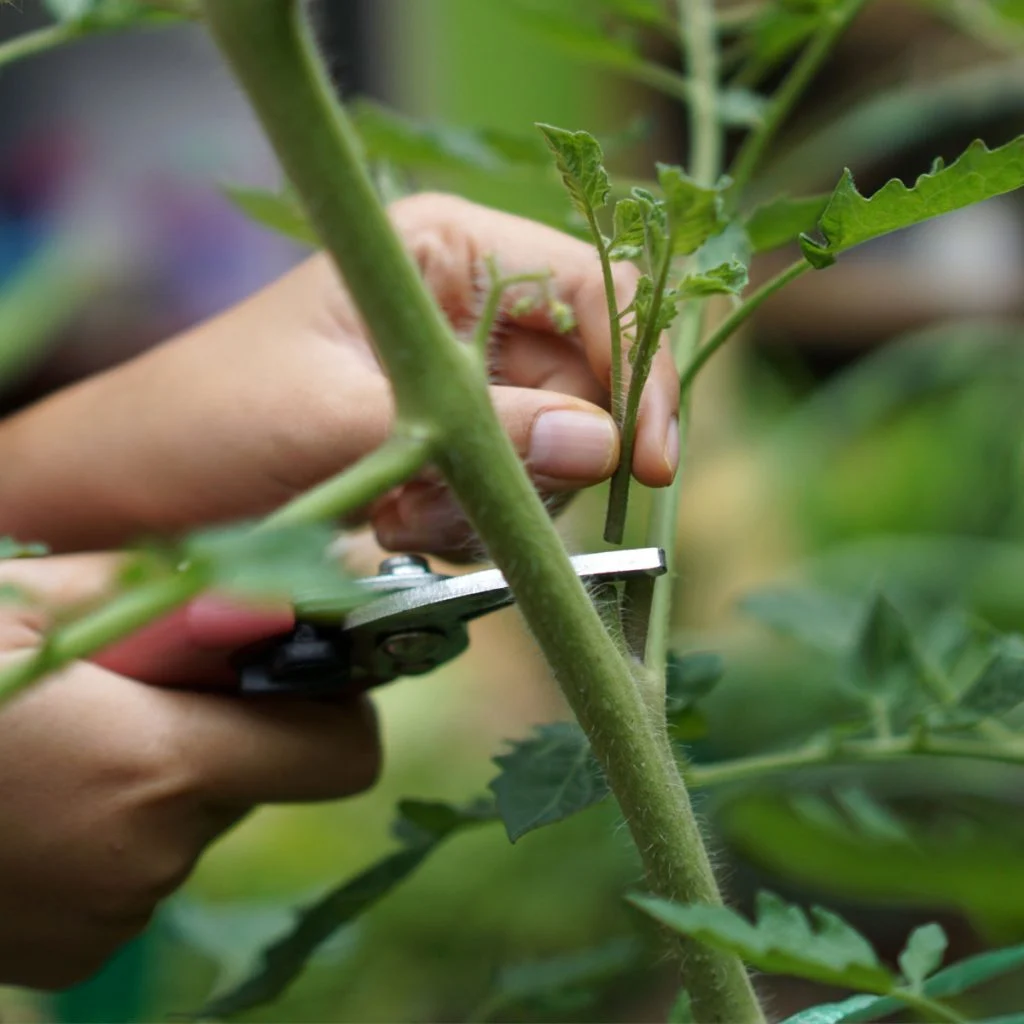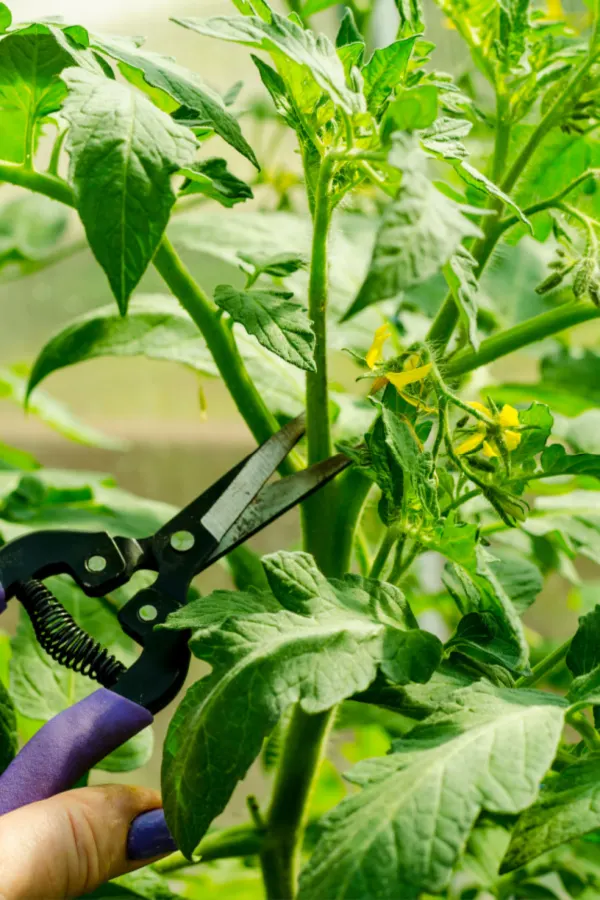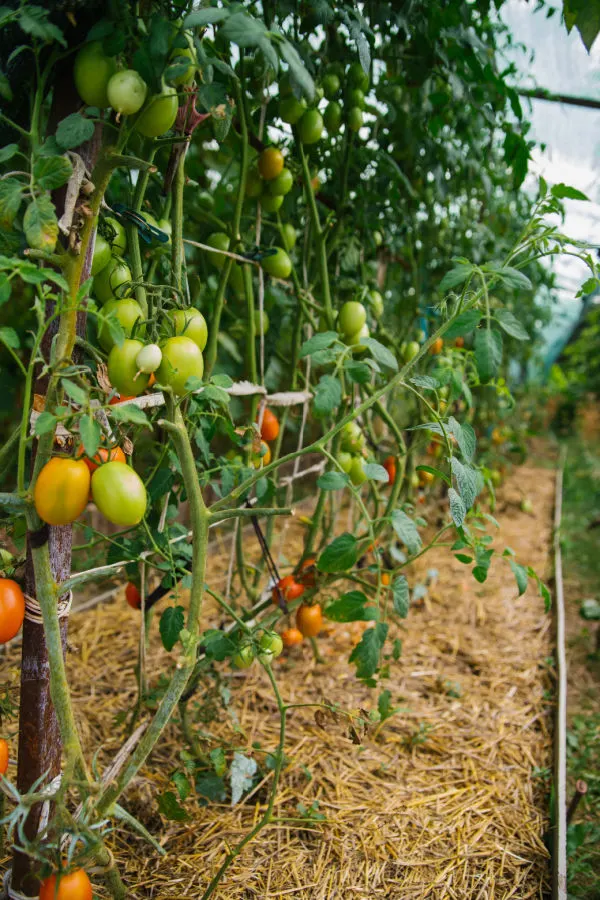When it comes to growing tomatoes, the one topic that always spurs a lot of debate is just exactly what to do with the tomato suckers that form on your plants – or more to point – should you remove them, or let them be?
On one side, you have long-time growers that insist that removing the suckers is a must. And at the other end of the spectrum, there are plenty of seasoned gardening veterans that say removing suckers is a waste of time and effort.
So who is right? Well – the first step to knowing the answer to this all important question is knowing exactly what a tomato sucker is – and what its purpose is for the plant.

What Are Tomato Suckers – And What Do You Need To Do With Them?
Tomato suckers are side shoots that grow in the joint of where the stem and branch of a tomato plant meet. In some cases, suckers can grow to only be a small set of small leaves. Other times, they can grow to become quite large branches.
In fact, some can grow big enough to have their own main stem and even more suckers of their own. But are they good to allow to grow?
One of the biggest misconceptions when it comes to tomato suckers is that they cannot produce blooms or fruit. They can actually do both quite well. If left to grow on their own, the branches, stems and fruit that suckers produce can be significant. So much that they can make up thirty percent or more of the plant’s total fruit if all are allowed to reach full maturity.
Sounds like a good thing to let them grow, right? After all, 30% more fruit sounds like a better deal on the surface. But surprisingly, it truly is best to remove them. Why? The answer is all about quality over quantity!
Why You Need To Remove Tomato Suckers
When it comes to pruning tomato plants, removing all or most of the suckers that form is truly the best option for a better harvest. Why? Because even though allowing the suckers to remain will allow your plant the opportunity to produce more tomatoes – it doesn’t mean they will all be good tomatoes.

Tomato plants require a tremendous amount of nutrients to grow, produce flowers and set their fruit. And when a tomato plant is allowed to grow at will, it burns more energy than ever. So much so that with an overabundance of branches, flowers and fruit, it doesn’t have enough energy left to grow sizable tomatoes. Even worse, it also has more issues developing the flavor of the tomatoes it produces.
By removing suckers, the plant doesn’t have to maintain or expend energy on growing excess foliage. And with less foliage, there will also be fewer flowers and fruit to develop as well. Because of that – all of the extra energy can instead go to producing bigger, more flavorful tomatoes!
The good news? Removing tomato suckers is so easy to do! There is no need for fancy pruners. All you need to do is pinch them off with your fingernails as they develop. In a matter of a few seconds, you can help to keep your plant under control all summer long.
Pruning The Rest Of Your Tomato Plants
In addition to removing tomato suckers, a little extra pruning at the base of your tomato plant will also pay huge dividends when it comes to the health of your plants. And also with the quality and quantity of your harvest.
One of the most vulnerable parts of a growing tomato plant is its base. When too many branches and stems are left near the bottom of a plant, it can make it easy for pests and disease to gain access to the foliage and fruit above. And once that happens, it can put an entire harvest in jeopardy.
Listen In Below To Our Podcast On Pruning Tomato Plants
Blight, one of the deadliest of all tomato diseases, occurs from spores in the soil getting on plants. And when leaves and branches of a tomato plant touch or are near the soil – the deadly spores can easily splash up on them whenever it rains or you water. See our article: How To Keep Tomato Blight Away From Tomato Plants – 2 Simple Ways To Eliminate Blight!
All of those low hanging leaves also make it easy for pests to climb up onto plants too. Aphids, whiteflies, hornworms and other tomato pests can easily hide under all of that low foliage, building their populations as they do so.
Even More Reasons For Bottom Pruning
There are also three additional and very important reasons to prune the bottom of your tomato plants up – and those happen to be to allow in air, light and water.
When you allow a large mass of stems, branches, and leaves at the bottom of your plant – it can block all three. And that can be bad for tomato plants that need good air flow, circulation and moisture to stay healthy and productive.

As your plants grow and mature, trim off the bottom set of leaves and branches. At first, trim up so young plants have at least 4 to 6 inches of space above the soil. At full maturity, large indeterminate tomatoes should have 12 to 18 inches of space. For smaller varieties and determinate types, prune up 8 to 12 inches at full maturity.
Here is to removing those tomato suckers this year and pruning your plants up. And when you do, to a healthier and better harvest of tomatoes all summer long! For more tomato growing tips, see: The Best Way To Tie Up Tomato Plants – How To Keep Your Tomatoes Under Control!
This Is My Garden
Follow Our Facebook Page For Great Gardening Tips And Advice! This Is My Garden Facebook Page
This Is My Garden is a garden website created by gardeners, for gardeners. Jim and Mary Competti have been writing gardening, DIY and recipe articles and books and speaking for over 15 years from their 46 acre Ohio farm. They publish three articles every week, 52 weeks a year. Sign up today to follow via email, or follow along!
